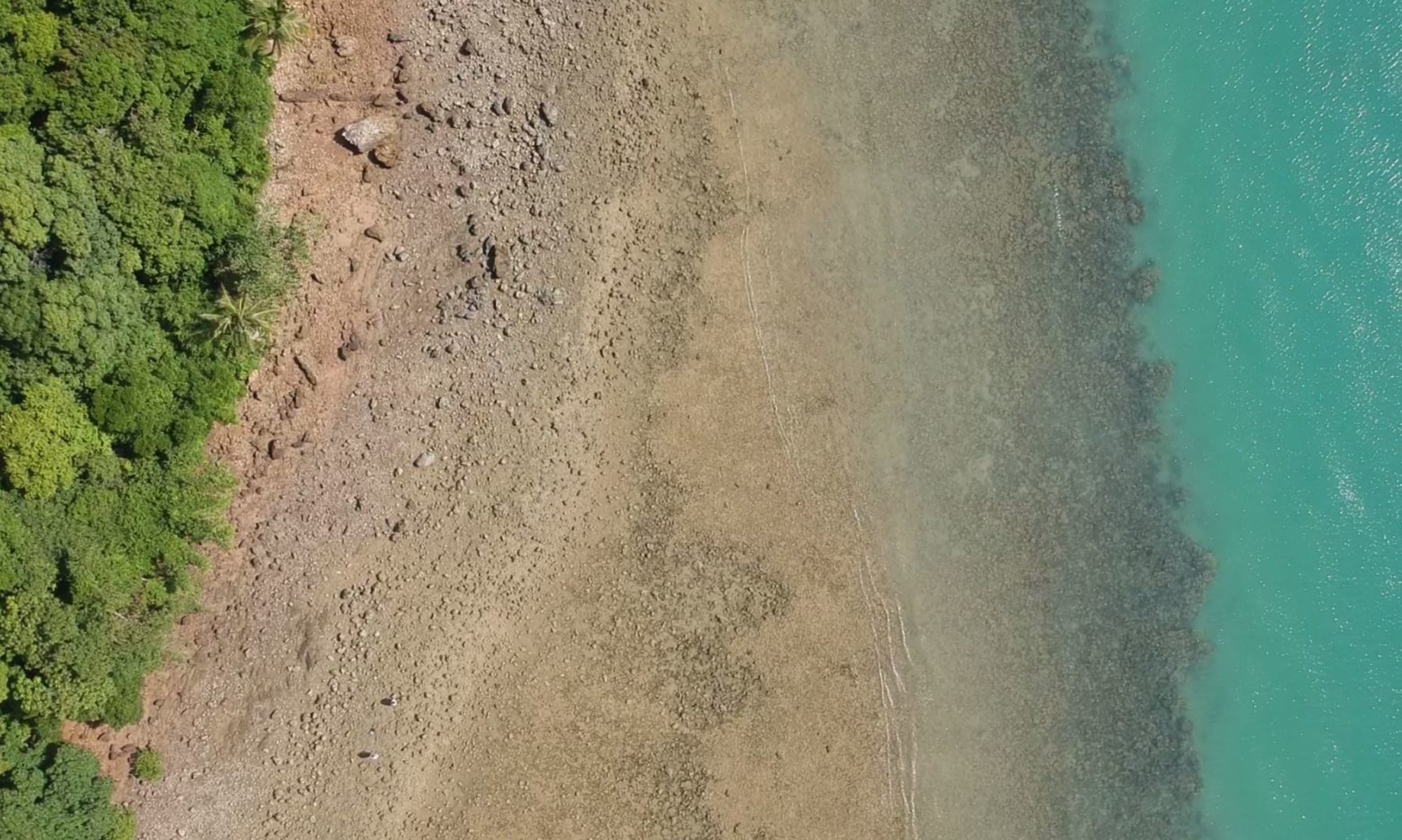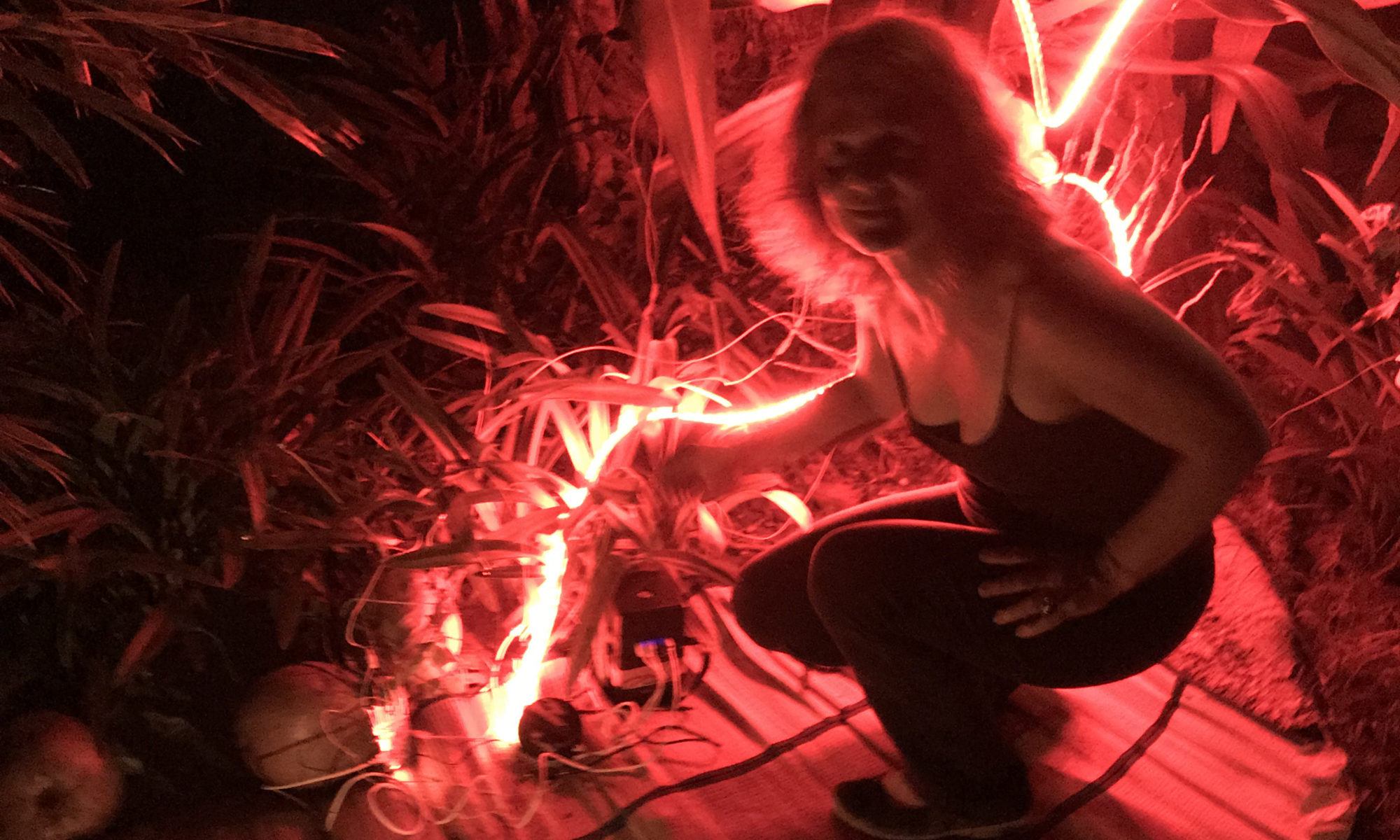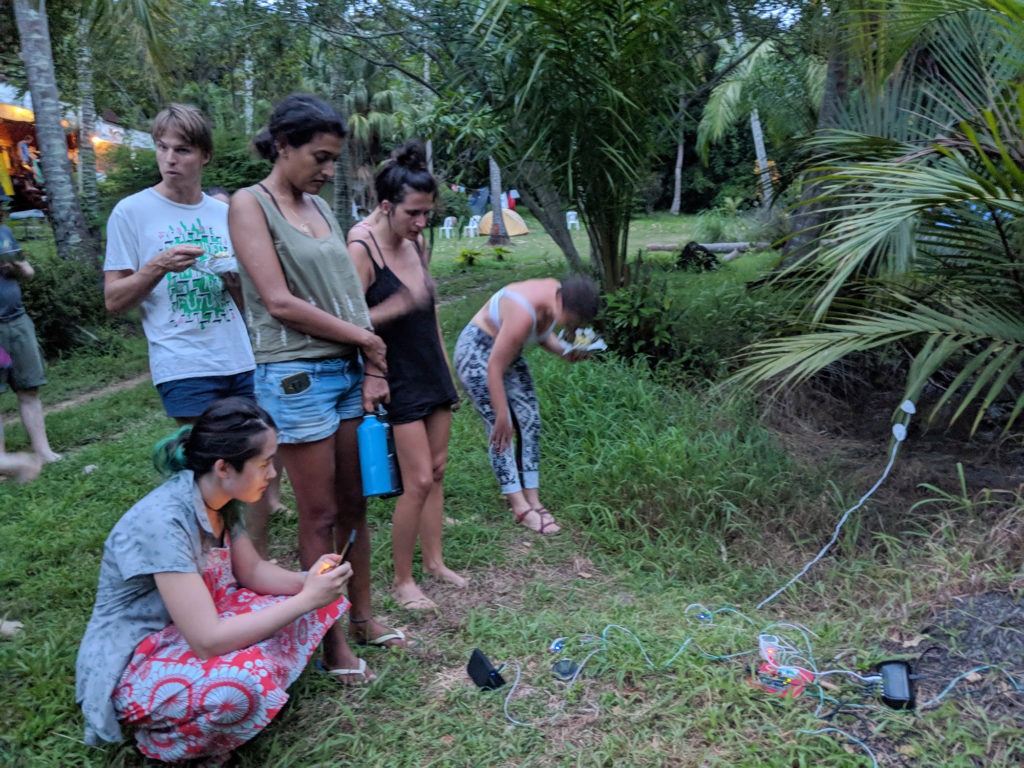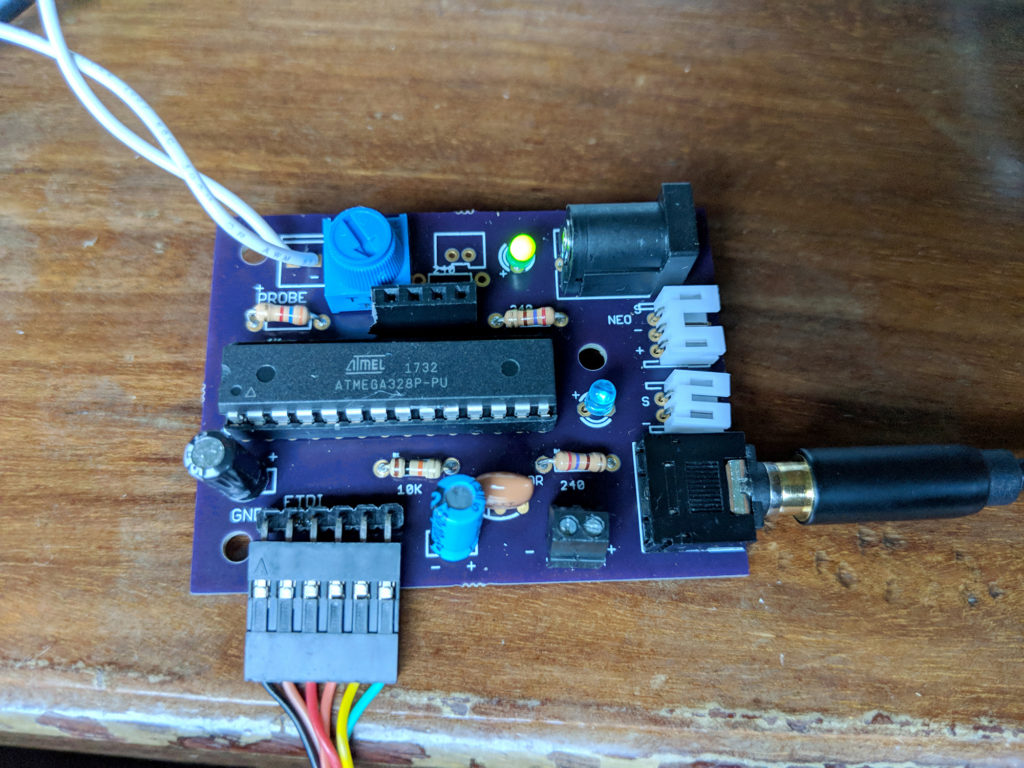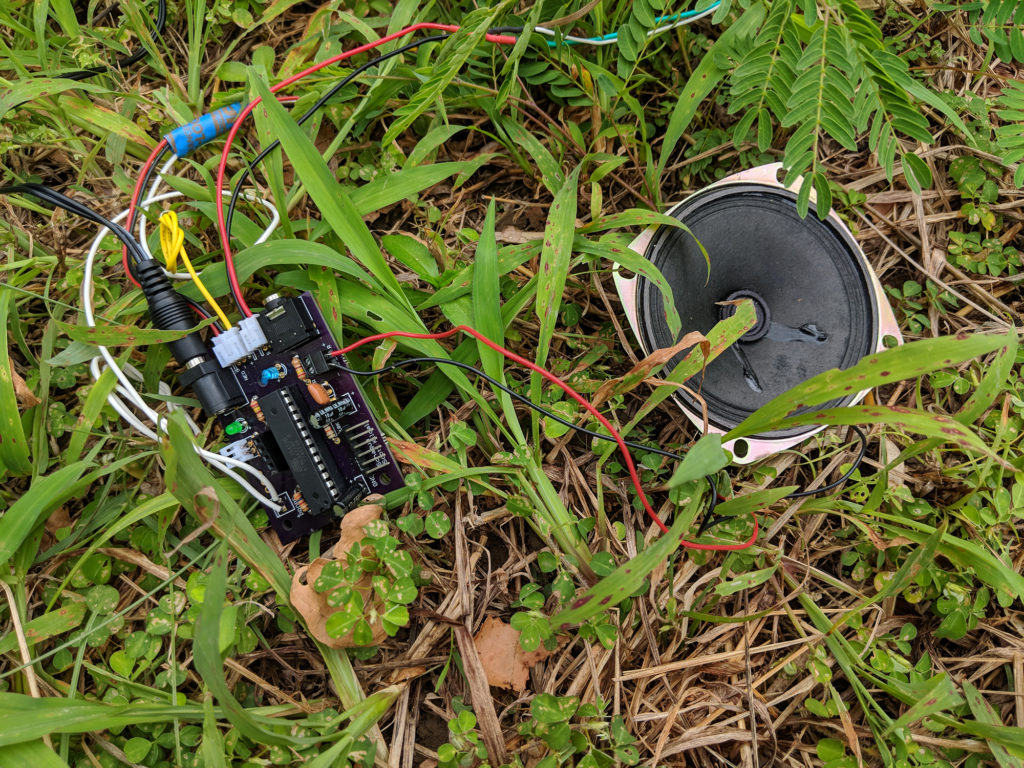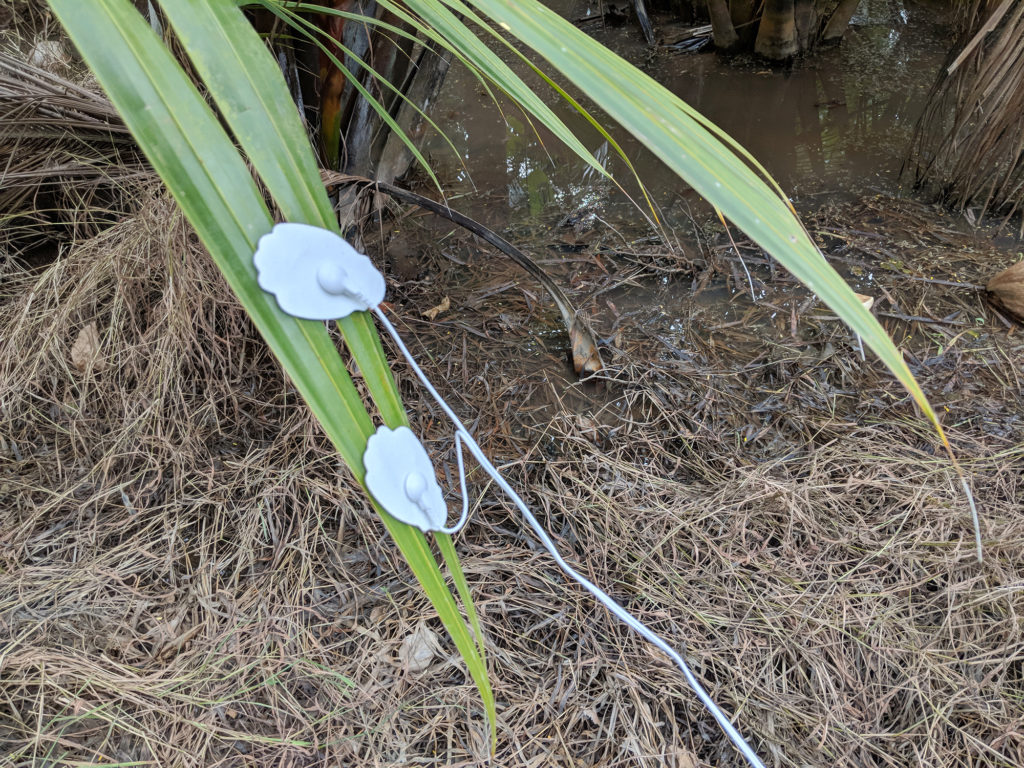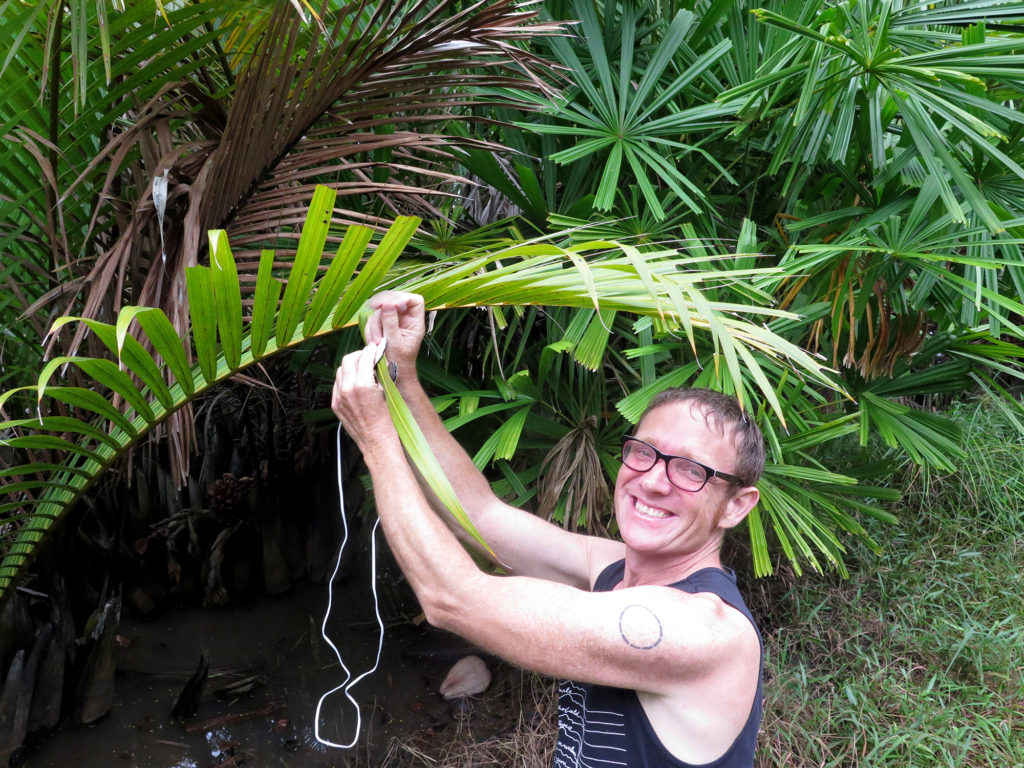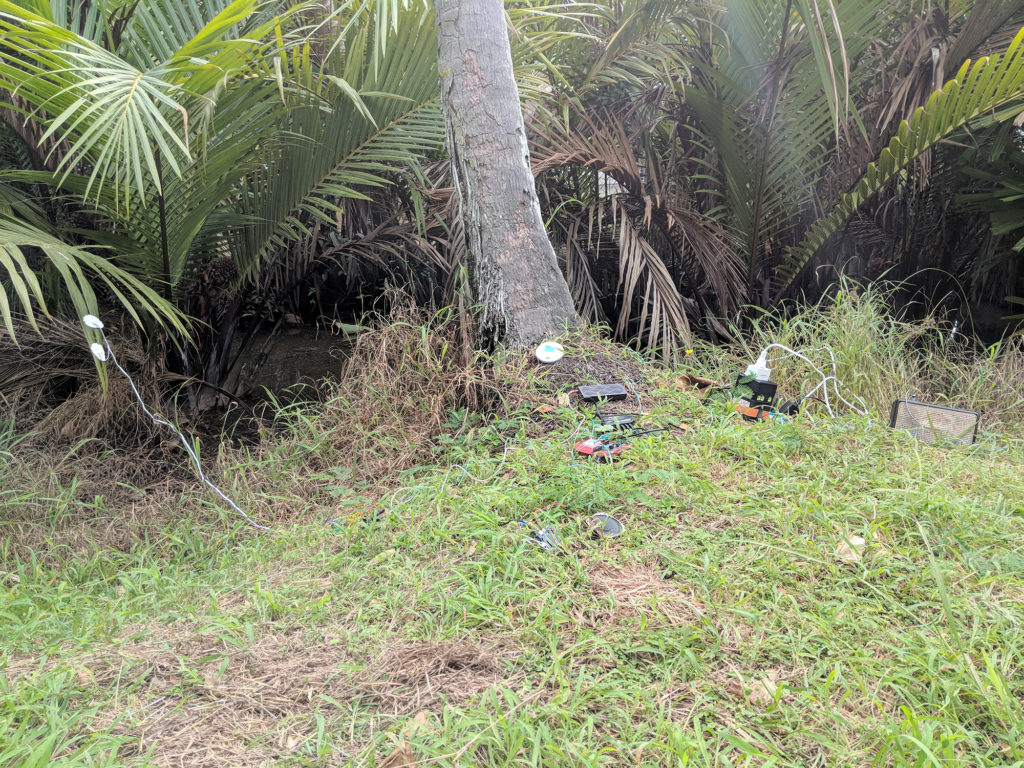Relax and listen to Gregory Hanks Green play the Khaen a traditional Lao/Thai mouth organ made of bamboo pipes, as colors reveal the garden forms of the Thai forest. Curate the sound of the Khaen and the colors of the nocturnal garden by touching the tropical plants. Discover each note or song and color the touch triggers. Gregory Hanks Green, the curator of the Echols Collection of Southeast Asian music at the Cornell music library is also a Khaen player. Green can be heard in the Nocturnal Garden playing a song on the Khaen in the Lai Nyai mode or create your own Khaen song as you touch the leafy plants. Khaen is tradition Thai and Laotian free reed instrument that sounds when the player breathes in or out. A touch of the plants provokes a note on the khaen or a complete song played by Green as well as an array of twilight colors.
Collaborators: Artist Joan Marie Kelly and Senior Lecturer at Nanyang Technological University, curated the concept, and design of the touch sensor installation specifically for the natural environment of Koh Lon Thailand and the Digital naturalism conference 2018. Senior Technical Manager, animation at NTU in Singapore Nagaraju Thummanapalli coded the music and colored LED light to sensors, Musician Gregory Hanks Green contributed the digital files of himself playing the Khaen, flutist Beth Kelly was music consultant, and Tourism Ethnographer Yuthasak Chatkaewnapanon gave cultural council of the context of the artwork. Below are 2 short videos of the Nocturnal Garden.
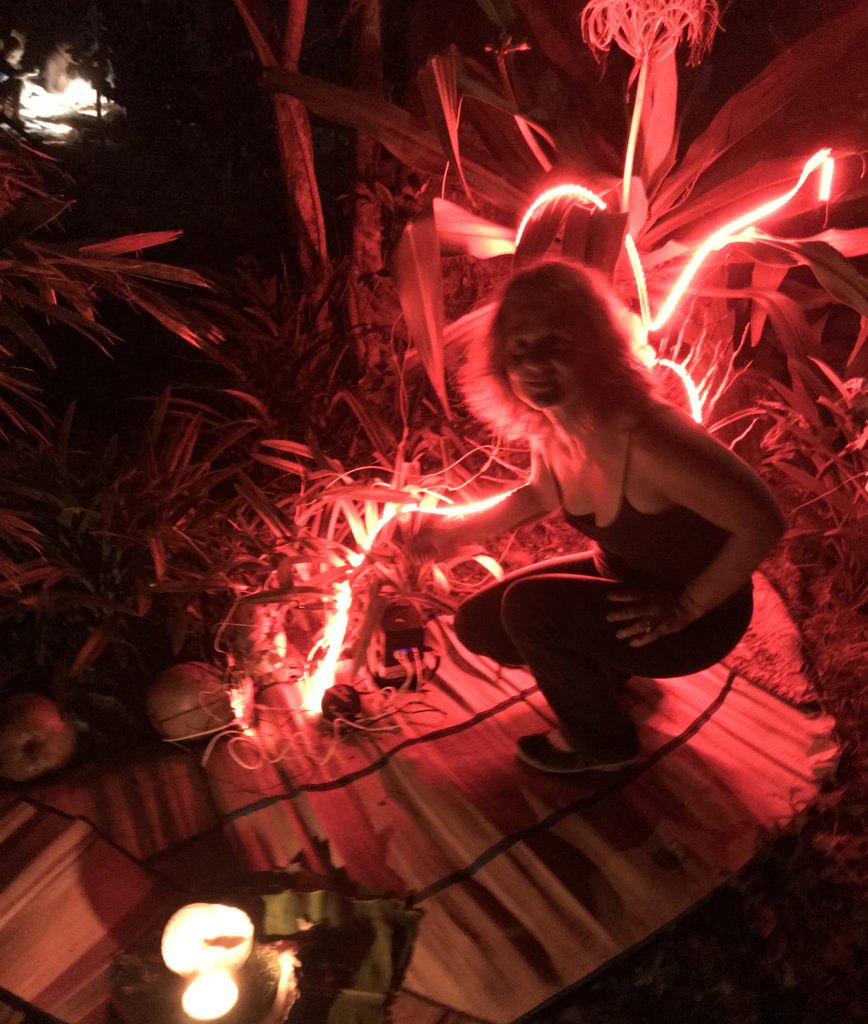 IMG_1007 IMG_0992 Joan Kelly testing the Nocturnal Garden
IMG_1007 IMG_0992 Joan Kelly testing the Nocturnal Garden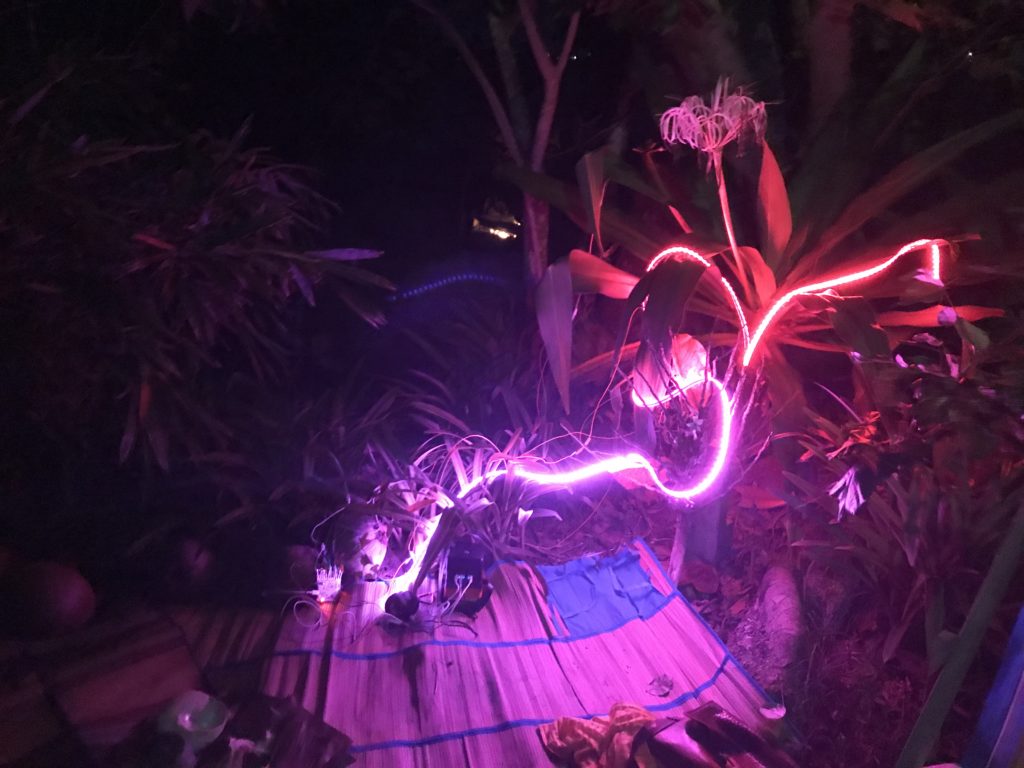 IMG_1032 (1)
IMG_1032 (1) 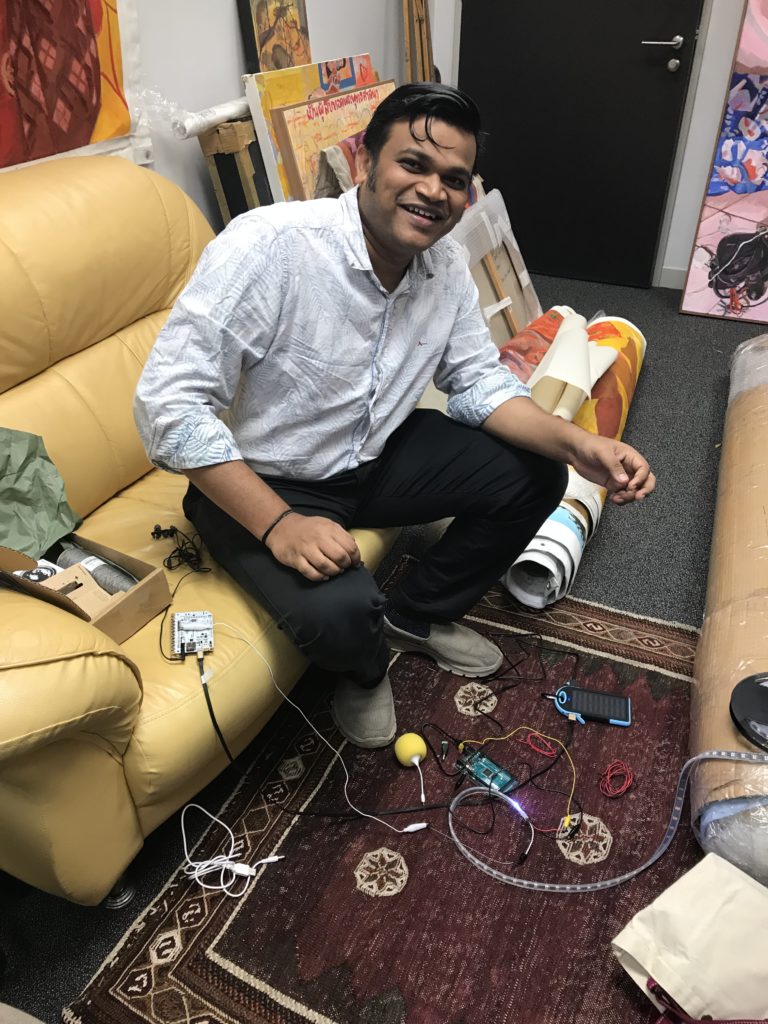
Nagaraju Thummanapalli teaching Joan Kelly the principals of electricity. Kelly has to do all the connections on site. 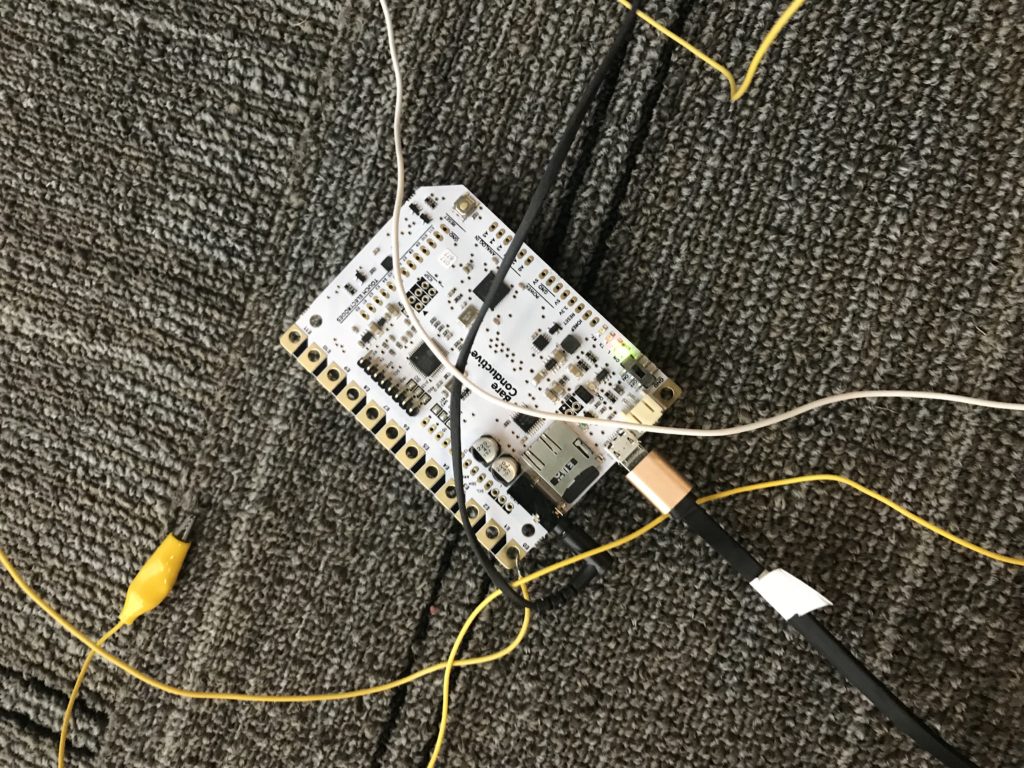
The computer chip, connections to sensors and power bank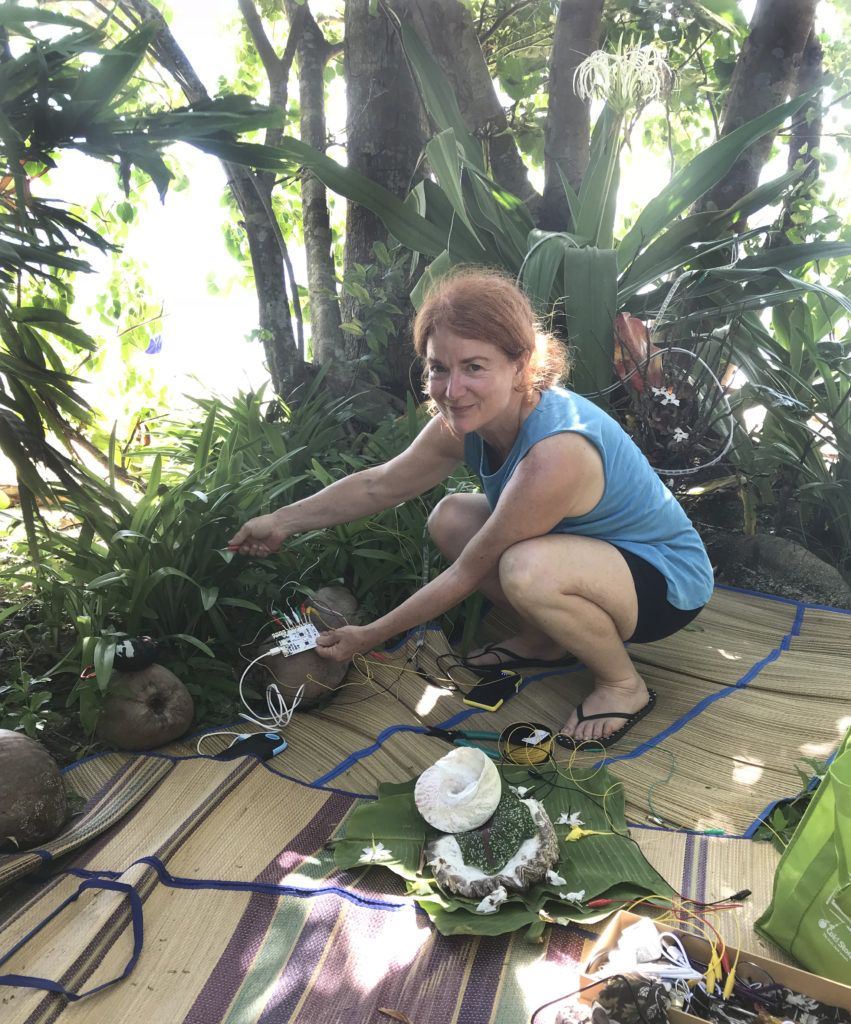
Joan Kelly making the connections on site.
